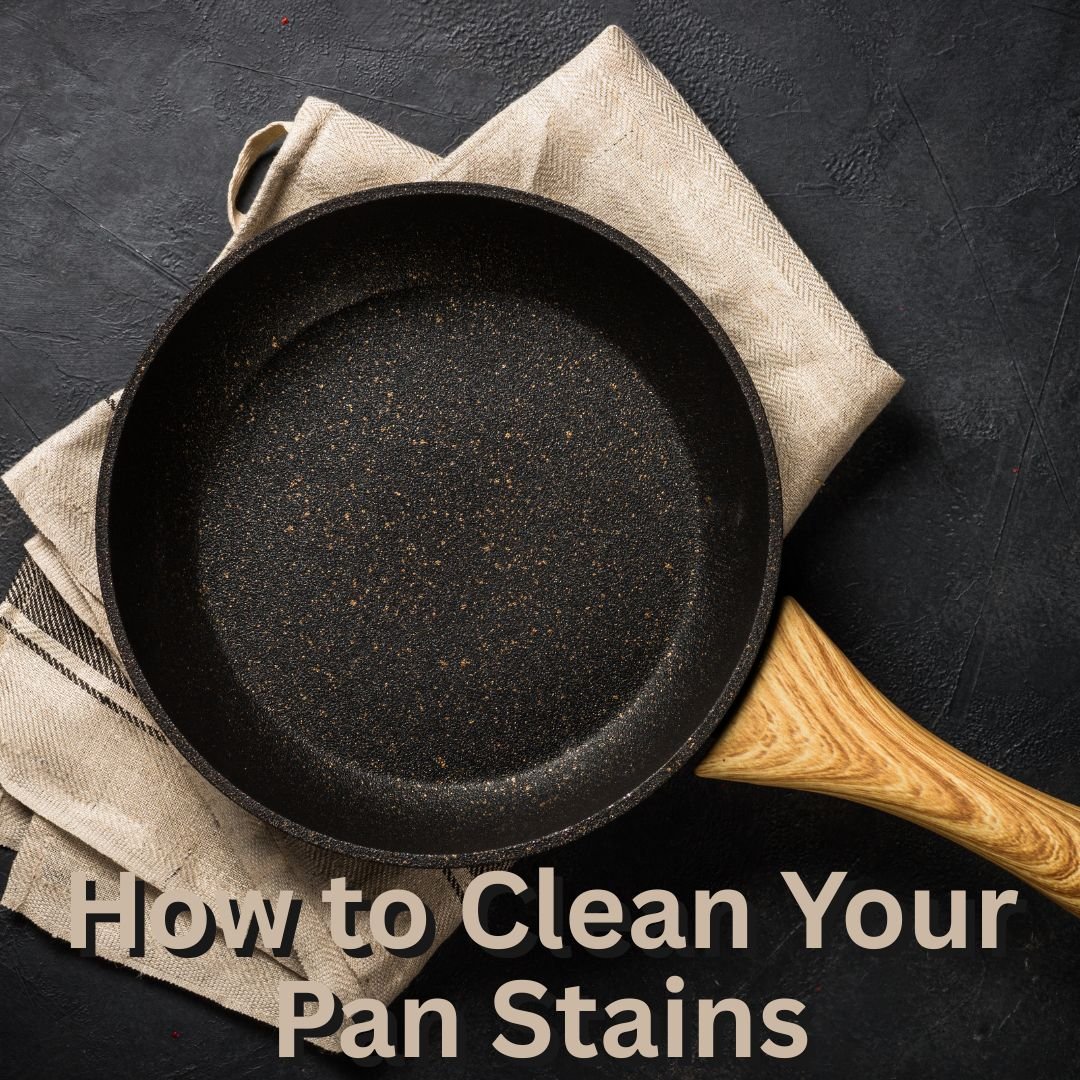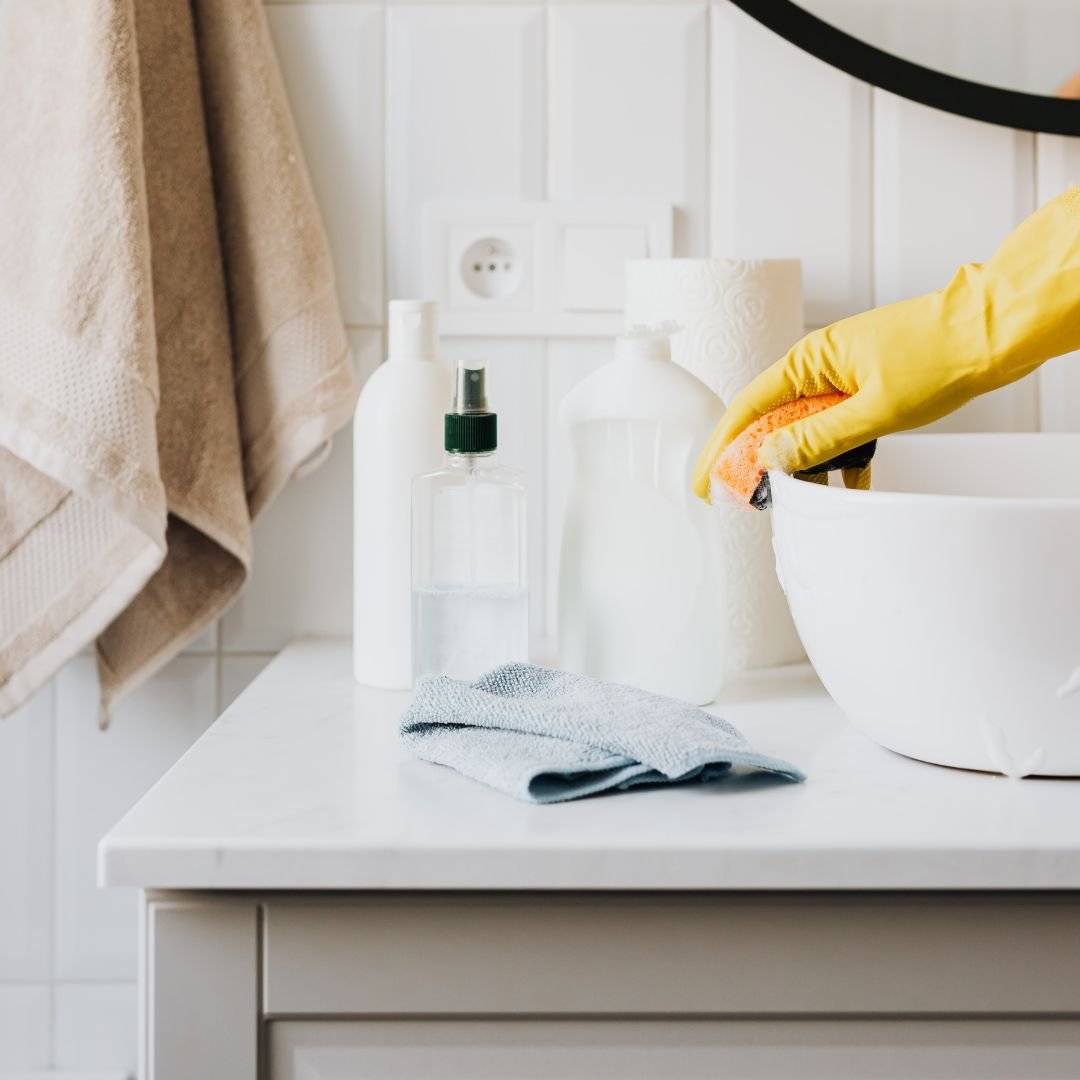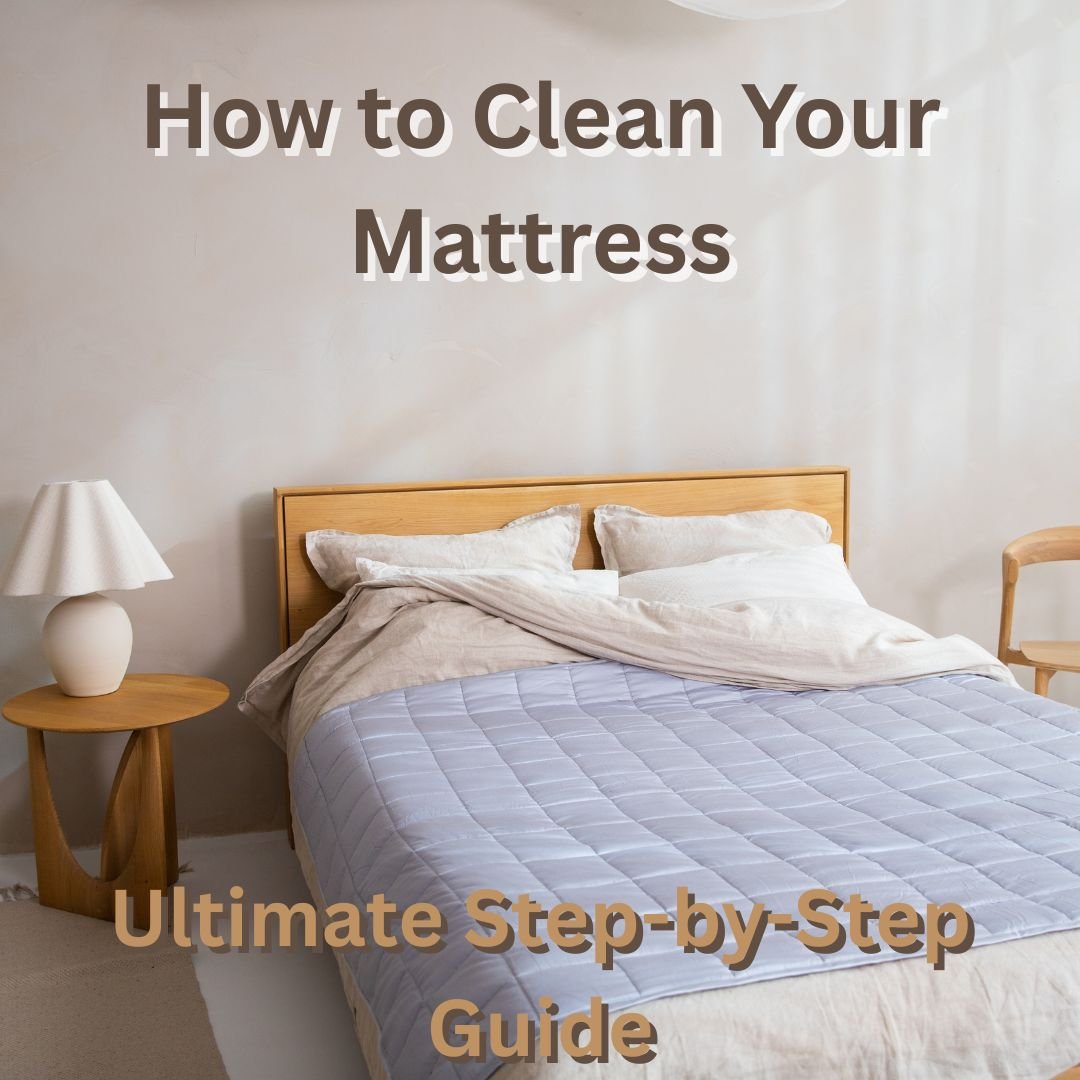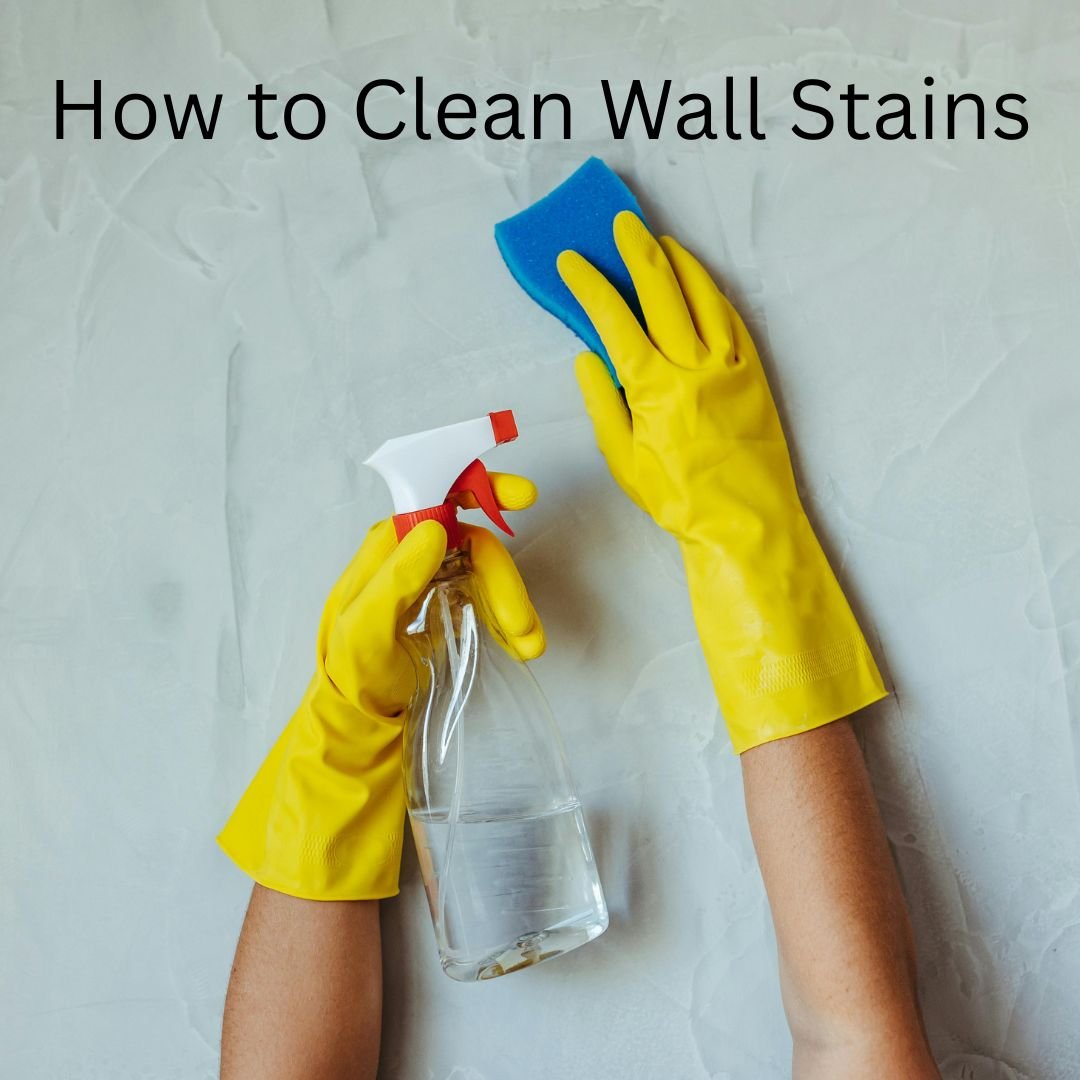Learn practical, step-by-step methods for how to clean your pan stains — from light discoloration to baked-on scorch — using kitchen-safe materials. Fast, repeatable, and friendly to most cookware.
Cleaning pan stains can feel like a chore, but with the right order, materials, and tiny tricks you’ll rescue your cookware without scratching or ruining finishes.
This guide shows how to clean your pan stains using stepwise techniques that work on stainless steel, nonstick (with caution), cast iron, and aluminum pans. Each step includes what you’ll need, a unique tip, and what good comes from doing it that way.

What you’ll need (essential supplies)
Dish soap (degreasing variety)
Baking soda (sodium bicarbonate)
White vinegar (distilled)
Coarse salt (for cast iron)
Lemon (or citric acid powder)
Hydrogen peroxide (optional, for steel)
Soft sponge, nylon scrubber or non-abrasive pad
Steel wool (#0000) — only for heavy stainless steel stains, not nonstick
Boiling-safe basin or stovetop and kettle
Microfiber cloth or paper towels
Oven mitts and gloves (optional)
Step 1 — Quick soak for fresh or light stains
What to do: Rinse pan, add hot water and a squirt of dish soap, let sit 10–30 minutes.
Unique tip: Add a few drops of dish soap and a handful of baking soda to create a foamy lift for oils.
What you can do with this step: Removes most grease and fresh food residue so later treatments target only stubborn stains, not everyday grime.
Step 2 — Baking soda paste for mild burnt spots
What to do: Drain water, sprinkle baking soda over the stain, add a little water to make a paste, let sit 15–30 minutes, scrub with non-abrasive pad.
Unique tip: For stainless steel, rub the paste in gentle circular strokes following the pan’s grain; that preserves finish while lifting stains.
What you can do with this step: Neutralizes acidic residues and gently polishes surface discoloration without harsh chemicals.
Step 3 — Boil with vinegar for mineral or white film
What to do: Fill pan with equal parts water and white vinegar, bring to a boil, simmer 5–10 minutes, cool, then wash.
Unique tip: If the pan has water spots from hard water, add a sliced lemon while boiling for a fresh scent and extra acid power.
What you can do with this step: Dissolves mineral deposits and loosens baked-on food, making stains rinse away easily.
Step 4 — Baking soda + vinegar fizz for stubborn baked-on stains
What to do: Sprinkle baking soda on the stain, pour a small splash of vinegar to create fizz, let foamy reaction sit 5–10 minutes, then scrub.
Unique tip: Use this on curved areas and rim junctions where food hides — let the fizz bubble into crevices.
What you can do with this step: The fizz lifts gunk from microscopic pores so scrubbing removes less and preserves more metal.
Step 5 — Salt + oil scrub for cast iron (no soap)
What to do: For cast iron, sprinkle coarse salt over the warm pan, add a little oil, scrub with a paper towel or cloth, wipe clean, re-season with a thin oil layer.
Unique tip: Use this method after cooking fatty foods — the salt acts as an abrasive while oil prevents stripping seasoning.
What you can do with this step: Restores surface texture, removes stuck-on bits, and preserves the pan’s natural nonstick seasoning.
Step 6 — Hydrogen peroxide (or cream of tartar) for discoloration
What to do: For stainless steel discoloration, make a paste of hydrogen peroxide and baking soda (or cream of tartar and water), rub gently, rinse thoroughly.
Unique tip: Test on a small area first; hydrogen peroxide lightens stains without harsh chlorine bleach fumes.
What you can do with this step: Addresses rainbowing and heat-tint that ordinary soaps don’t remove.
Step 7 — Oven self-clean trick for extremely burnt pans (stainless steel only)
What to do: Place pan upside down in a self-cleaning oven cycle (careful — read pan manufacturer instructions; not for nonstick or cast iron). After cycle completes and pan cools, wash as usual.
Unique tip: Skip this for valuable or thin pans — use only on heavy-gauge stainless cookware rated for high heat.
What you can do with this step: Burns away carbonized layers that are otherwise impossible to remove by hand.
Step 8 — Gentle maintenance for nonstick pans
What to do: Never use steel wool or oven self-cleaning. For stubborn stains on nonstick, soak in warm soapy water, then scrub with a nylon pad and baking soda paste if needed.
Unique tip: If nonstick has white, cloudy film, heat water + vinegar in the pan for a few minutes, then cool and wipe — avoids scratching the coating.
What you can do with this step: Extends nonstick life while safely removing residue.
Step 9 — Final polish and drying
What to do: Rinse thoroughly, dry immediately with a microfiber cloth. For stainless, buff with a small amount of oil to restore shine; for cast iron, apply thin layer of oil and heat briefly.
Unique tip: Drying immediately prevents water marks and mineral spotting — rub in one direction to match finish.
What you can do with this step: Prevents new stains and protects the pan for the next use.
Extra unique tips (one per method — no repeats)
Use hot water immediately after cooking to reduce the chance of food carbonizing.
Let a baking soda paste sit overnight for deeply set tea or tomato stains.
For hard-to-reach edges, use a toothbrush dipped in paste to get inside the lip.
When using vinegar, ventilate the kitchen to avoid strong odors building up.
Replace coarse salt with ground coffee grounds for a less-abrasive scrubbing option on cast iron.
To remove burnt sugar, fill with hot water and add a dishwasher tablet; let it dissolve — then scrub.
For aluminum pans with darkened bases, boil water with lemon slices for 15 minutes then polish.
Always cool cast iron slowly; thermal shock can crack or warp thinner pans.
Common mistakes to avoid
Never use steel wool on nonstick surfaces.
Don’t mix bleach with vinegar (toxic chlorine gas).
Avoid overheating pans in the oven without checking manufacturer guidelines.
Don’t soak cast iron in soap — it strips seasoning.
Repeat main topic
Remember: this article is all about how to clean your pan stains — quickly, safely, and with materials most kitchens already have.
Quick facts & advantages (concise)
Facts
Baking soda is mildly alkaline and neutralizes acids; that’s why it’s excellent for lifting stains without harsh scrubbing.
White vinegar is acetic acid; boiling it dissolves mineral film and food residues.
Coarse salt is a mechanical abrasive ideal for cast iron because it doesn’t damage seasoning when used with oil.
Advantages of following these steps
Saves money by restoring cookware instead of replacing it.
Preserves pan finishes and nonstick coatings when using correct methods.
Eco-friendly: uses low-toxicity, kitchen-safe ingredients instead of harsh chemical cleaners.
Faster cleaning in the long run — prevention and correct sequencing mean less elbow grease later.
Closing takeaway
With the right order and tools — soak, lift, fizz, scrub, and protect — you can confidently handle everything from everyday oil stains to stubborn scorch marks.
Follow these steps to master how to clean your pan stains, keep your cookware looking great, and get more life from the pots and pans you already love.





